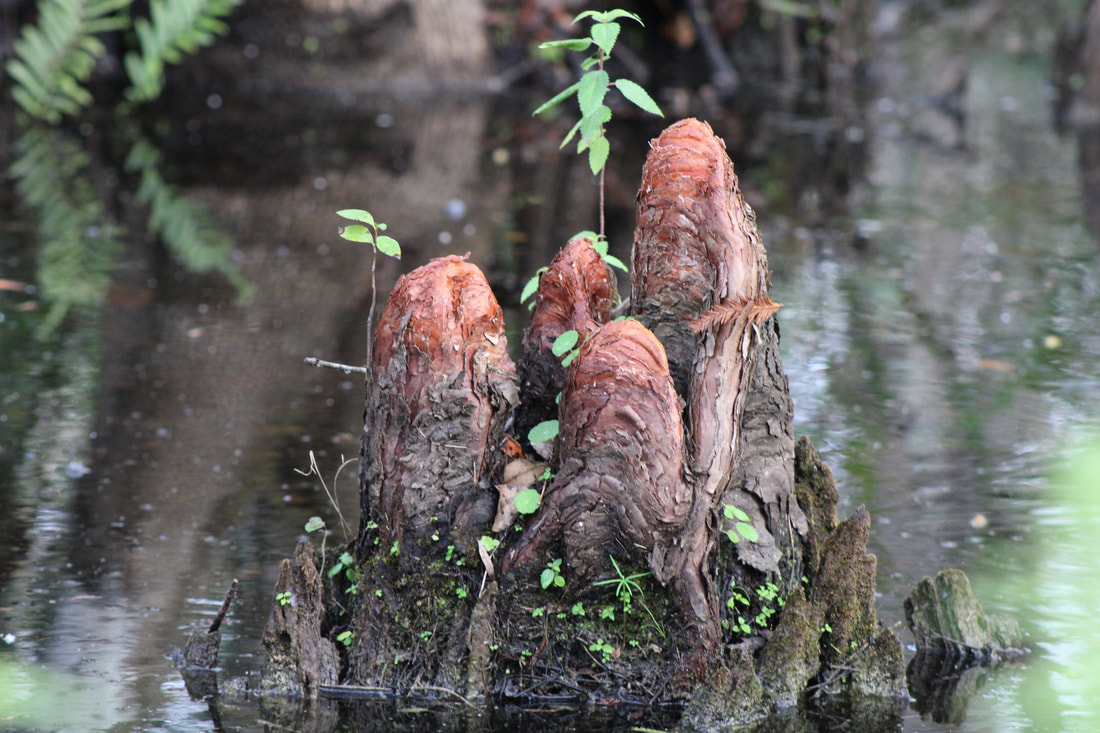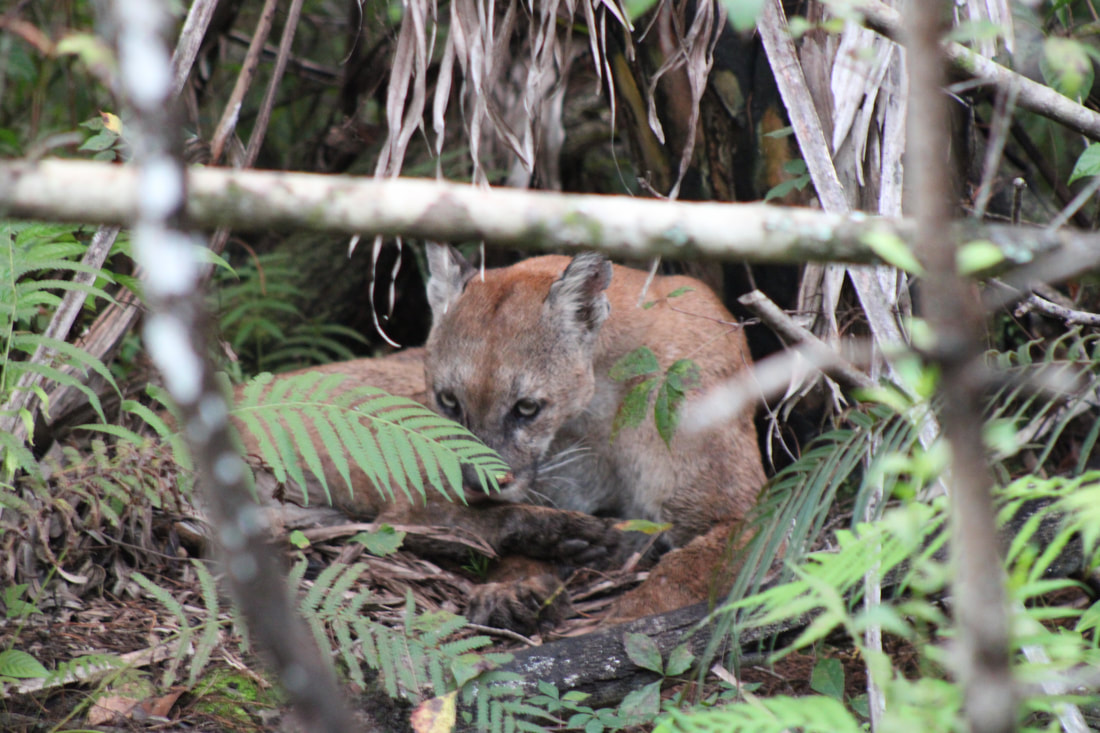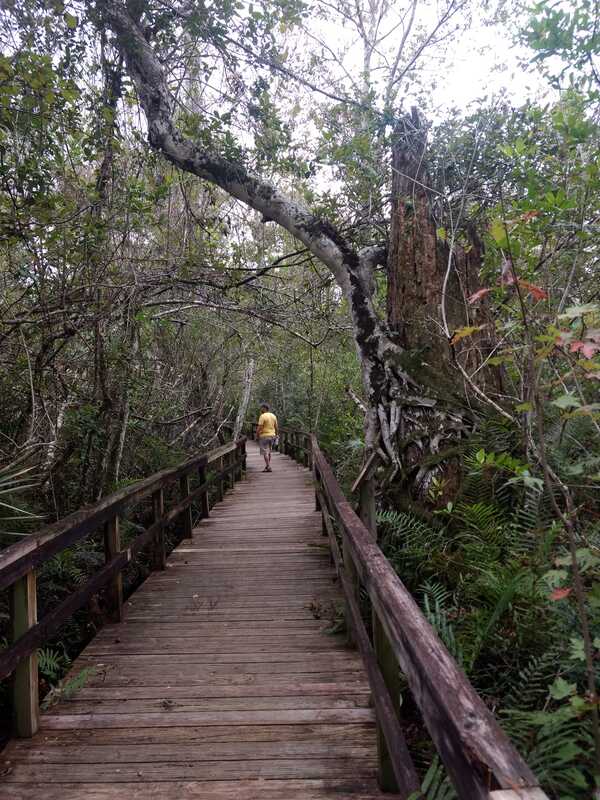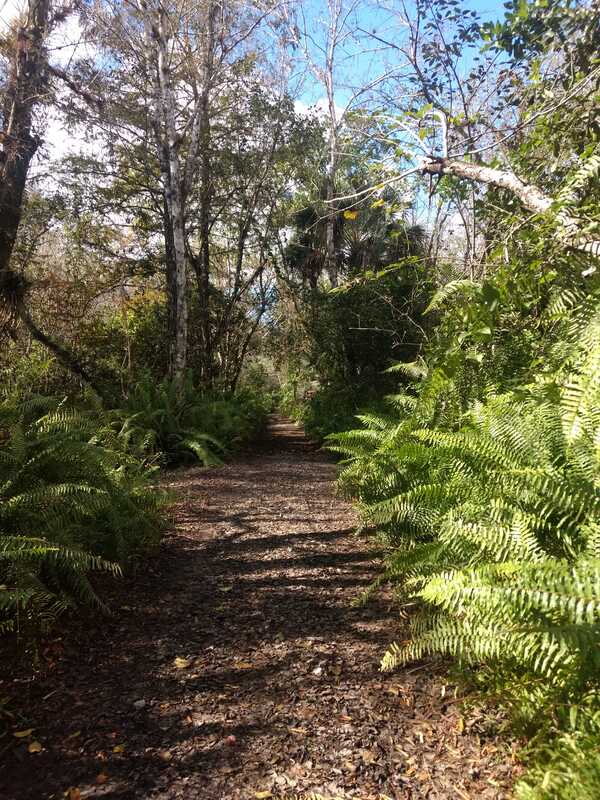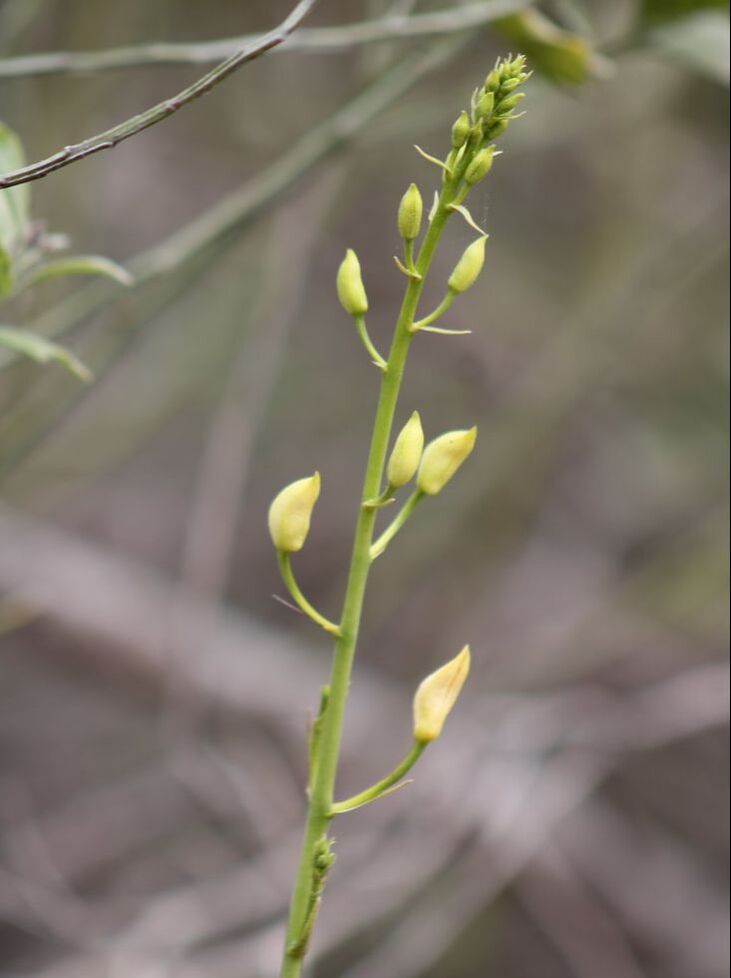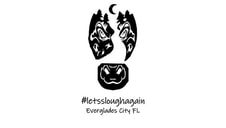Big Cypress SwampCypress swamps, called domes, are communities that are dominated by bald cypress trees. Cypress domes, look circular from above, though some are open in the center, like a doughnut. As these deeper solution holes almost always hold water year-round, they are an important refuge for aquatic animals like alligators. The Big Cypress Swamp is made up of smaller, sub-habitats, called strands.
|
Fakahatchee StrandThe Fakahatchee Strand Preserve State Park is a vast and wondrous place in the Western Everglades. It holds the deepest slough in the Big Cypress Swamp and is the largest strand swamp in the world, varying from three to five miles in width, and over twenty miles in length. Some of the rarest plants on Earth live only in the Fakahatchee.
Fakahatchee Strand is the world’s largest subtropical strand swamp and a geological feature unique to southwest Florida. It provides habitat for many threatened or endangered species including the Florida panther, Florida black bear, American crocodile, wood stork, mangrove fox squirrel and Everglades mink. Fakahatchee Strand Preserve is the largest state park in Florida and is home to a variety of plant and animal species that can be found nowhere else in the continental U.S. The emphasis at Fakahatchee is on the preservation of its natural character. In keeping with this goal, facilities and activities are limited but offer the visitor a wilderness to enjoy and explore. "Known as the "Amazon of North America" and the "Orchid Capital of North America," Fakahatchee could very well be South Florida's best-kept outdoor secret, full of complicated history; diverse, exotic species; educational programming; hikes, and, of course, high-profile incidents." -CNN Travel |
